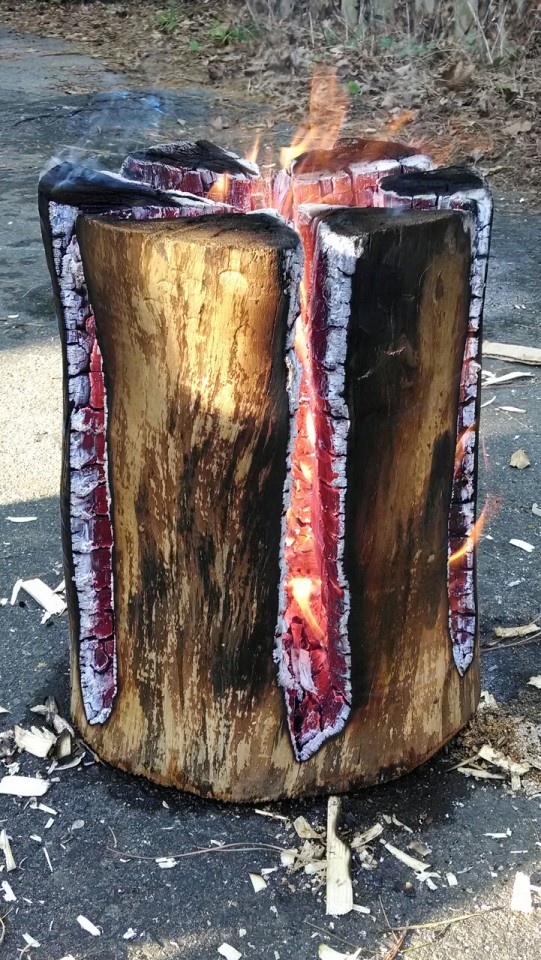I Need A 3D Printer.

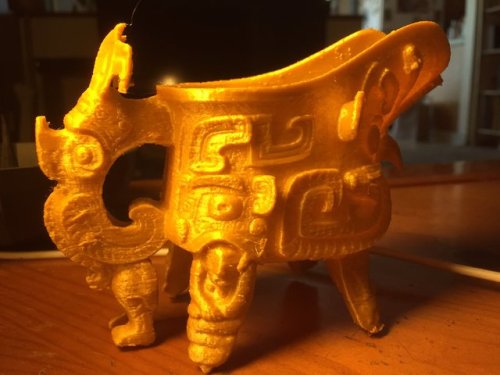

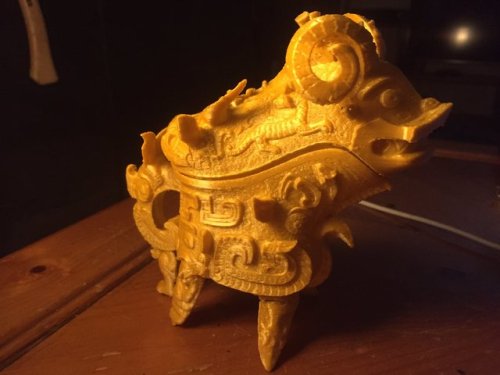
I need a 3D printer.
More Posts from Sunlightandbasil and Others

Free open course on entomology focusing on human-insect interactions. I think that this may be of interest to ya’ll since it’s meant for everyone who loves bugs! And it’s FREE.
Tutorial: from paper to digital.
Hey ya’ll! I’m not much of a tutorial person, but this was a technique that I learned from Syuzuki, one of my favorite artists back in the day, when I was 13. I memorized the technique and it’s been one of the most useful things I can do on photoshop. This was something that really helped me, and I hope that it will be useful for even some of you.
In this tutorial, I will be going step by step how I take something from my sketchbook and color it on photoshop.

















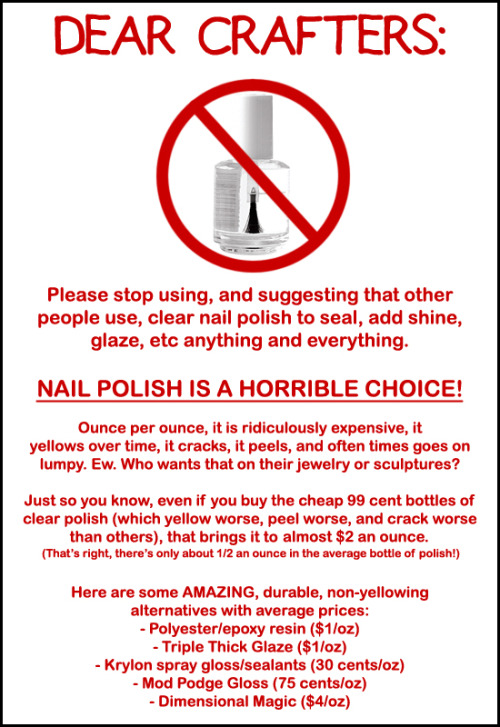
Lately I’ve been seeing a lot of decoden and polymer clay questions about what to use to as a gloss/glaze. Almost every time the first response is “Clear nail polish, duh!”.
This needs to stop if people want to be creating quality items. Sometimes I’m afraid to buy handmade things for fear that they have been sealed with clear nail polish and they will deteriorate over time. I want to buy things that will last!

You should Not use popcorn time and you should Not use a VPN while using it
ULTIMATE "OH FUCK I JUST GOT MY FIRST APARTMENT AND ALL I HAVE IS ONE CHANGE OF CLOTHES AND A THIRD SOCK" CHECKLIST
CLEANING
Dish soap
Laundry detergent
All-purpose cleaner
Hand soap
Broom
Mop
Wash cloths / rags
Vacuum
Dustpan
Lint roller
Sponges
KITCHENWARE
Plates
Bowls
Spoons
Forks
Knives
Glasses
Mugs
Tongs
Spatula
Plastic wrap
Ziplock baggies
Garbage bags
Paper towel
Tupperware
Ice tray
Oven mitts
Potato peeler
Mixing bowls
Frying pan
Pot
Baking sheet
Whisk
Stirring spoons / ladels
Tea infuser ball
Measuring cups
Strainer
Cutting board
Coffee maker
Kettle
Toaster
Magnets
Dry erase markers
Sticky notes
Microwave
Wire sponge
Trash bin
Recycling bin
Rubber gloves
Silverware organizer
Measuring spoons
Aluminum foil
Wax paper
Can opener
Bottle opener
Containers for salt, sugar, flour, etc.
LIVINGROOM
Sofa
Rocking chair (you know you want one)
Loveseat
Coasters
Blankets
Throw pillows
Coffee table
Book shelves
TV
TV stand
Floor lamp
End table
Stereo system / radio
BEDROOM
Mattress
Box spring
Bedframe
Linens
Sheets
Comforter
Hangers
Laundry hamper
Trash bin
Curtains
Pillows
Pillow cases
Night table
Alarm clock
Lamp
Dresser
Coat rack
Desk / vanity
Comfy chairs
DININGROOM
Dining table
Minimum of 2 chairs
Coasters
Placemat
Tablecloth
Tea lights /candles and candle holders
BATHROOM
Face clothes
Towel
Soap bar
Body wash
Shampoo
Conditioner
Tissues
Toilet paper
Trash bin
Plunger
Toilet cleaner
Cold, flu, pain, and allergy meds
Hydrogen peroxide
Antibacterial ointment
First-Aid kit
Tweezers
Nail clippers
Band-aids
Shower rod
Shower curtain
Toothbrush
Toothpaste
Floss
Period products
Bathmat
Air freshener
Trash bin
Towel rod
Towels
MISCELLANEOUS
Elastic bands
Stapler
Stables
Paper clips
Needles and thread
AA / AAA batteries
Light bulbs
Extension cords
Scotch tape
Duct tape
Shovel
Rake (if you have a yard)
Stain remover
Jar of courters for laundry mat
Screw drivers
Hammer
Nails
Sticky tack
Screws
Box cutter / X-acto
Pliers
Wrench
Pens
Paper
Pencils
Pencil sharpener
Eraser
Welcome matt
Shoe rack
Coat rack
Flashlight
Flashlight batteries
Watch batteries
Rechargeable batteries and charger
Safe place to discard dead batteries
Candles
Matches
Lighter
Mini travel fans
Real fans
Emergency Survival kit
Fire extinguisher
Landline phone
Window air conditioner
Carbon monoxide alarm
Fire alarm
FOOD STUFF
Mustard
Ketchup
Mayo
Salt
Pepper
Baking soda
Flour
Eggs
Milk
Bread
Olive oil
Tea
Jam
Peanut-butter
Coffee grounds
Cereal
Rice
Pasta
Vegetable soup
Tomato sauce
Frozen vegetables
Crackers
Chickpeas / lentils
Apples
Oranges
Granola bars
Juice
Hot chocolate mix
Frozen meats
15 reasons to build an herb spiral for your garden (By Jean Bardot, Natural News)
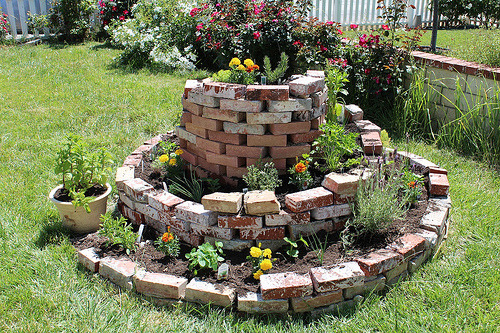
(By Jean Bardot, Natural News)
Whether you’re a city mouse or a country mouse — with a high-rise patio or 1000 acres — building an herb spiral near your kitchen allows you to partake in the sustainable permaculture revolution and have fresh organic culinary herbs at your fingertips. An herb spiral is a compact vertical garden built on specific principles allowing for individualized management of wind and water flow to create the ideal garden in a limited amount of space.

The spiral is a natural form that provides an efficient method for managing space, storing and sorting. Using the natural universal design of a spiral, the forces of gravity and water flow are utilized to their fullest allowing for proper drainage downhill. Herbs that thrive on drier soils live at the top, whereas those needing more moisture reside at the bottom where water collects. This form allows for planting of a widely diverse number of plants, and creates natural, sunny and shady areas — a perfect miniature microclimate landscape environment. The herb spiral as a permaculture form that allows you to create your own ecosystem and become self sufficient. The format can be adapted to large gardens if space is available.
Stone or block building materials allow for retention of heat and insulate plants in colder weather or at night, while acting as the backbone for the structure. Collect water at the bottom and have a small fish or frog pond or even a bog and grow edible water plants. An herb spiral can be built even on a concrete foundation and filled with the richest biodynamic, organic earth to support any plants included.

The spiral should always be built to move in the direction of water drainage in whatever hemisphere it’s located in — for example, in the Northern hemisphere, water runs off in a clockwise direction and the opposite is true for the Southern hemisphere. This allows for optimal positioning of the pond at the bottom and reduces evaporation. The spiral can be built as a round or oval shape to take advantage of the movement of summer sunlight.
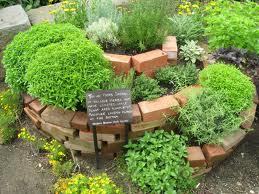
15 REASONS TO BUILD AN HERB SPIRAL FOR YOUR PERMACULTURE GARDEN
1. Maximize growing space to grow more food. 2. Multiple microclimates available for optimal plant growth.
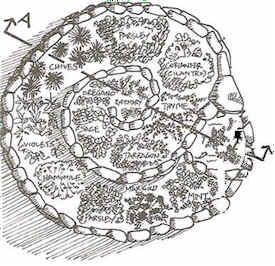
3. Healthier plants where growing needs are met and companion planting is easy to reduce insect problems and foster beneficial plant relationships for better growth. 4. Aesthetic garden focal point.

5. Maximizes space even in very small areas on top of concrete or in high-rise buildings. 6. Harvesting access is easy and all plants are effortlessly accessible. 7. No bending, everything is at waist height — hooray!

8. Save money by growing your own food. 9. Eat organic, using heirloom seeds and avoid pesticides and genetically engineered seeds. 10. Reduces maintenance, little weeding and easy to turn and mulch.

11. Manage water amounts and use natural forces to perpetuate the growing season. 12. Reduce building costs when you use local available materials. 13. Use drip irrigation or a small sprinkler for easy watering and irrigation.

14. Create a bio-diverse habitat for creatures who come to visit. 15. Build an herb spiral to grow medicinal herbs to avoid Big Pharm drugs.
Sources for this article: http://www.mitra.biz http://themicrogardener.com http://welcometovoluntarysimplicity.wordpress.com http://www.mysquarefootgarden.net/creating-an-herb-spiral/
-
 pika-yolo liked this · 1 week ago
pika-yolo liked this · 1 week ago -
 dlwendel reblogged this · 1 week ago
dlwendel reblogged this · 1 week ago -
 vardasvapors liked this · 2 weeks ago
vardasvapors liked this · 2 weeks ago -
 xy0009 reblogged this · 2 weeks ago
xy0009 reblogged this · 2 weeks ago -
 pastebun reblogged this · 2 weeks ago
pastebun reblogged this · 2 weeks ago -
 pastebun liked this · 2 weeks ago
pastebun liked this · 2 weeks ago -
 martfartkitty123 reblogged this · 2 weeks ago
martfartkitty123 reblogged this · 2 weeks ago -
 martfartkitty123 liked this · 2 weeks ago
martfartkitty123 liked this · 2 weeks ago -
 mihumbleabode reblogged this · 2 weeks ago
mihumbleabode reblogged this · 2 weeks ago -
 bejwjan reblogged this · 2 weeks ago
bejwjan reblogged this · 2 weeks ago -
 fearthegayfrogs reblogged this · 2 weeks ago
fearthegayfrogs reblogged this · 2 weeks ago -
 fearthegayfrogs liked this · 2 weeks ago
fearthegayfrogs liked this · 2 weeks ago -
 7-seeds reblogged this · 3 weeks ago
7-seeds reblogged this · 3 weeks ago -
 doperel liked this · 3 weeks ago
doperel liked this · 3 weeks ago -
 jenarion3 reblogged this · 3 weeks ago
jenarion3 reblogged this · 3 weeks ago -
 b-oredzoi liked this · 3 weeks ago
b-oredzoi liked this · 3 weeks ago -
 yawgmoths-favorite-wizard liked this · 3 weeks ago
yawgmoths-favorite-wizard liked this · 3 weeks ago -
 lilac-est reblogged this · 3 weeks ago
lilac-est reblogged this · 3 weeks ago -
 lilac-est liked this · 3 weeks ago
lilac-est liked this · 3 weeks ago -
 myfriendsneedtostop reblogged this · 4 weeks ago
myfriendsneedtostop reblogged this · 4 weeks ago -
 bobthebenevolentpirate liked this · 4 weeks ago
bobthebenevolentpirate liked this · 4 weeks ago -
 ihateearlgreyteaitshorrible liked this · 1 month ago
ihateearlgreyteaitshorrible liked this · 1 month ago -
 confused--robot reblogged this · 1 month ago
confused--robot reblogged this · 1 month ago -
 chainsawmochi reblogged this · 1 month ago
chainsawmochi reblogged this · 1 month ago -
 shanedoesdoodles reblogged this · 1 month ago
shanedoesdoodles reblogged this · 1 month ago -
 shanedoesdoodles liked this · 1 month ago
shanedoesdoodles liked this · 1 month ago -
 salad-of-potatoes liked this · 1 month ago
salad-of-potatoes liked this · 1 month ago -
 salad-of-potatoes reblogged this · 1 month ago
salad-of-potatoes reblogged this · 1 month ago -
 calciferous-kelpie reblogged this · 1 month ago
calciferous-kelpie reblogged this · 1 month ago -
 ukulelegodparent reblogged this · 1 month ago
ukulelegodparent reblogged this · 1 month ago -
 kolejnylangblr reblogged this · 1 month ago
kolejnylangblr reblogged this · 1 month ago -
 ragamuffindumplin reblogged this · 1 month ago
ragamuffindumplin reblogged this · 1 month ago -
 queerpunktomatoes liked this · 1 month ago
queerpunktomatoes liked this · 1 month ago -
 impulsivelycontentious reblogged this · 1 month ago
impulsivelycontentious reblogged this · 1 month ago -
 impulsivelycontentious liked this · 1 month ago
impulsivelycontentious liked this · 1 month ago -
 tokumoris liked this · 1 month ago
tokumoris liked this · 1 month ago -
 altairrr liked this · 1 month ago
altairrr liked this · 1 month ago -
 sunknight1142 reblogged this · 1 month ago
sunknight1142 reblogged this · 1 month ago -
 enbysaurus-rex reblogged this · 1 month ago
enbysaurus-rex reblogged this · 1 month ago -
 kajiimotojiiro reblogged this · 1 month ago
kajiimotojiiro reblogged this · 1 month ago -
 kiki-eng reblogged this · 1 month ago
kiki-eng reblogged this · 1 month ago -
 phocidday liked this · 1 month ago
phocidday liked this · 1 month ago -
 hottakehoulihan reblogged this · 1 month ago
hottakehoulihan reblogged this · 1 month ago -
 myfriendsneedtostop liked this · 1 month ago
myfriendsneedtostop liked this · 1 month ago -
 chrysalyos liked this · 1 month ago
chrysalyos liked this · 1 month ago -
 jeneelestrange reblogged this · 1 month ago
jeneelestrange reblogged this · 1 month ago -
 consolationblog reblogged this · 1 month ago
consolationblog reblogged this · 1 month ago -
 murrmir reblogged this · 1 month ago
murrmir reblogged this · 1 month ago -
 inspo-dsgn reblogged this · 1 month ago
inspo-dsgn reblogged this · 1 month ago

